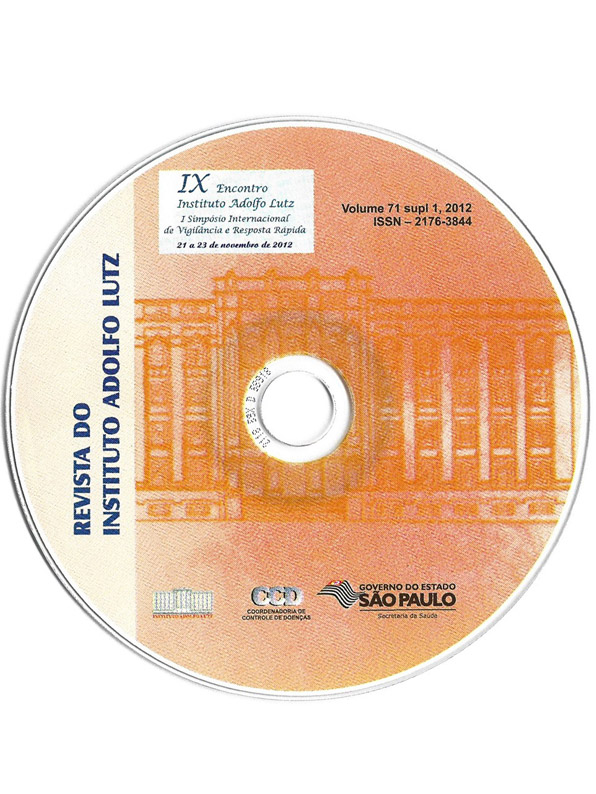Resumo
Influenza viruses are a common cause of human respiratory infections and responsible for annual epidemics and occasional pandemics. The influenza infection is an immunopreventable disease. In contrast to many other vaccines, influenza vaccines have to be updated frequently because circulating influenza viruses continuously evolve. Molecular and antigenic surveillance are important to provide information about the viruses circulating that will guide influenza vaccine development and strategies. Our study was performed to monitor the emergence of new variants of Influenza A(H3N2) and Influenza B viruses circulating in Brazil. Respiratory secretions and necropsy tissues collected by the National Influenza Network during January 2010 to June 2012 were investigated. A total of 52 Influenza A(H3N2) and 47 Influenza B strains of laboratory confirmed cases were analysed. The full-length HA gene was amplified by RT-PCR and directly sequenced. Sequences were compared with a corresponding panel of representative global sequences forphylogenetic associations. Sequence analysis of the HA gene of Brazilian strains of A(H3N2) indicated that the viruses were closely related to the A/Perth/16/2009-like lineage, the vaccine virus for the 2011-2012 southern hemisphere. Considering the Brazilian strains of Influenza B viruses, both the B/Victoria/2/87 and the B/Yamagata/16/88 lineages circulated. However, Victoria lineage was more prevalent than Yamagata lineage, which predominated during the 2011-12 influenza season. No differences among the amino acid residues within the HA receptor binding sites of Influenza A(H3N2) and Influenza B viruses were detected and the potential N-glycosylation sites predicted in the HA1 domain of both subtypes were found in all strains. Since the recommended composition of influenza virus vaccines for use in the northern hemisphere 2012-2013 influenza season changed, it is crucial an intensive surveillance of circulating viruses worldwide. In addition to the antigenic characterization, molecular surveillance can contribute to the vaccine selection process as an important measure towards influenza virus preventable strategies.

Este trabalho está licenciado sob uma licença Creative Commons Attribution 4.0 International License.
Copyright (c) 2012 SET Borborema , KO Correa, DBB Silva , MA Benega, JC Pereira, CRA Constantino, MA Ishida, RS Paulino, MI Oliveira , TM Paiva , CLS Santos
